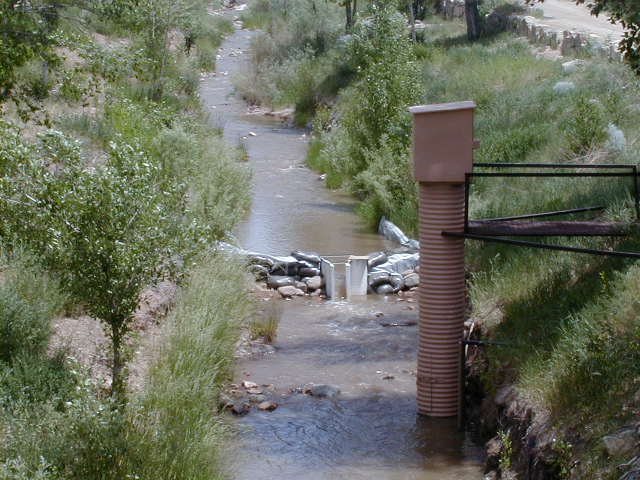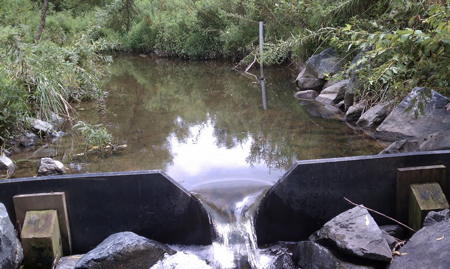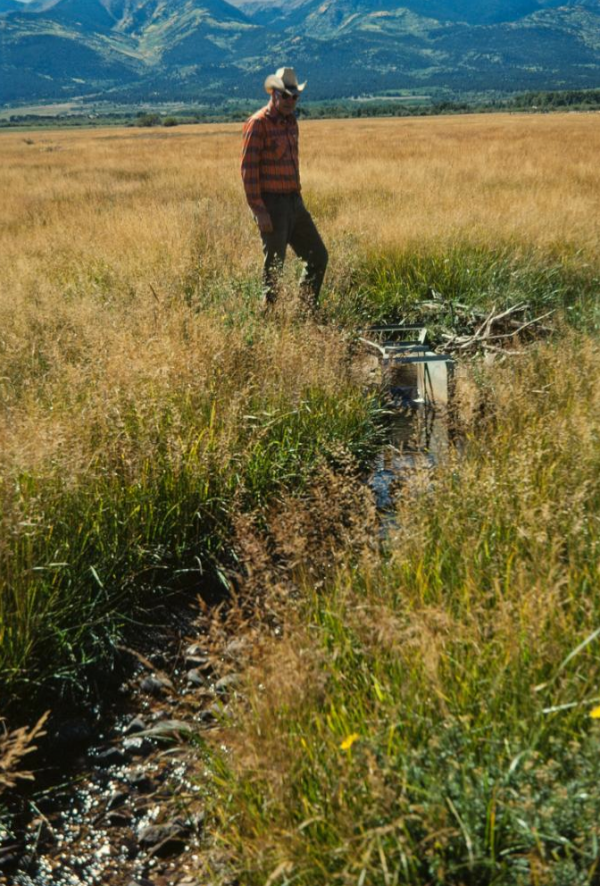This website uses a variety of cookies, which you consent to if you continue to use this site. You can read our Privacy Policy for
details about how these cookies are used, and to grant or withdraw your consent for certain types of cookies.
Discharge Measuring Structures for Channels
Flumes and weirs have historically been the tools used to measure the flow of water in natural and manmade channels. Either can be used by itself (with the operator taking manual level readings) or in conjunction with a secondary flow meter for automated data collection.
Flumes can generally be defined as hydraulic structure which water flows through, while weirs are hydraulic structures which water flows over. Weirs have the advantage of being relatively lower in cost and relatively simply to construct, while flumes can be tailored to a greater range of flows and require less head loss.

While laboratory investigations have shown weirs (+/- 2-5%) to be more accuracy than flumes (+/- 3-5%), in practice operators are unlikely to see significant differences in total system accuracy when all other sources of error are accounted for.
The discharge equations for weirs are straight forward but do require that the head measurement be taken upstream of the weir itself. Depending upon the flume style, the discharge equations can range from simple (Parshall) to quite complex (H flume), but the head is measured in the flume itself.

While both flumes and weirs are intended to be used to measure free-flows, they can be adapted to provide relatively accurate flow readings with submerged flow. However, the effects of submergence are much greater for weirs than they are for most styles of flume so if submergence is a possibility, it is best to either design the installation so that it does not occur, or use a flume that either has high resistance to the effects of submergence (Palmer Bowlus, Trapezoidal), or has published equations for correction (Parshall, Cutthroat).
Related Blog Posts
Explore more insights in our blog.

LOCATIONS IN ATLANTA, GA & BOISE, ID




